Be a Consumer to Change a Consumer
What makes a consumer open to change? Consider asking yourself the same question.
“It takes one to know one.” For those of us studying consumer behavior, that statement couldn’t be more true. Take some tips from Corey Beilstein on how to channel your “inner consumer” to gain deeper insights and understanding of your consumer target.
Brand X: “Change to my brand! Try this amazing innovation!”
Consumers: “No, thank you. I like the way I do things now.”
What’s a growth acceleration team to do?
We always start with consumers as our guides. Finding the most relevant and disruptive insights is like cracking a code. When we decode consumers at Seed, we start with basic facts:
- We’re in the business of consumer behavior change
- Behavior change is difficult for consumers.
- But most importantly… we are all consumers.
As consumers… as humans… we reject change. We’re not wired for it. We like routines and predictability. Big changes are stressful: getting married, having a child, changing jobs. Switching brands of deodorant, trying a new kitchen gadget… these shouldn’t be stressful changes. We can crack those codes.
In marketing, business strategy, innovation or consumer understanding roles, it is critical to get out and know the consumer. At times this means deep immersion, empathy missions, in-home ethnography, shop-alongs and the like. It’s big research, time, expenses, travel… resources!
But when consumer behavior change is the goal, being a consumer can be extremely insightful as well.
To practice being a consumer, live in your category; change from one product to another. Record your journey. You may illuminate a personal insight that unlocks a different way to think about your consumer. Knowing behavior change in your own life as a consumer works an empathy muscle that traditional methodologies sometimes cannot replicate. A few simple exercises can help start a habit of decoding your own consumption and behavior.
Ponder some change.
What to do:
Think of a major change you made at some time in your life.
- Why did you decide to change?
- What made the change easy? What motivated you?
- What made the change difficult? What barriers arose?
- How did you waiver or resolve along the way?
- Record your thoughts and look for patterns. Think of another example. Repeat. Practice!
How to apply it: - Look at the things that motivated you and the barriers that got in the way.
- How is your consumer target motivated to change in similar ways?
- What barriers to change does your consumer face?
- How can you leverage things that made change easier in your life to help your consumer change their behaviors?
Chat some change.
What to do:
“Moderate” friends and family… at parties and gatherings. Ask friends or family members about recent changes they have faced, especially relevant product, category or brand behavior changes. They are consumers, too. They like to talk. Reframe and be playful.
What’s the biggest left turn you’ve made in your life?
- What were the choices at the fork in the road?
- What motivated you to make the decision that you made?
- What made you doubt the choice? What strengthened your resolve?
- How would it have turned out differently? Where would you be today?
What is a new product, category or brand you’ve tried recently?
- Why change? Why did you try it? What were you using previously?
- What’s the best thing about using this product instead of the old way you were doing things?
- What’s working? What makes changing easy?
- What’s not working? What makes changing difficult?
How to apply it: - Be mindful of the words used to articulate answers. What responses qualify as “motivations” and what responses are “barriers” to change?
- Listen for phrases like…-“I thought,” “I wanted,” “I worried.”
- Keep them talking with follow-up questions like…– “How did you come to think that way?”- “How did it feel to choose that option and not the other?”
- This is the language of behavior change. As you train your ears to hear this language of change, you can apply it the following ways:In research, use change language to build more powerful survey or discussion guide queries.In innovation concepts or the development of strategic creative communications, create stronger benefit messages by leveraging motivational change language.For any consumer-facing messages, prioritize relevant tension areas and concept support points by focusing on the most common barriers to a specific change.
Absorb ads.
What to do:
Watch live television. Watch the commercials. Skip Netflix. Don’t fast-forward the DVR.
(Oh yeah, no PBS, either.)
- Pick a show you like to watch and let’s assume you’re in the target audience demographic for that show’s advertisers.
- You’re the consumer, right? Ask yourself questions!– How are they targeting me? What’s their message? What’s the hook?- What behavior change are they asking me to make?- How are they encouraging and motivating me to make a change?- How do they acknowledge that change is difficult (if at all)?
– How do they claim to help with barriers to change?
– If the behavior change is large or complex, how does the ad break it into steps?
– Is it working? Are you in the car on the way to the store right now?
– If it’s a product or category you’ve never considered purchasing,
ask yourself why. What would make you change?
- Keep a record… a running list of ads you’ve watched that got you thinking about behavior change. Follow-up; check out their websites, print ads, etc. Is the message consistent? Is it relevant to you?
How to apply it:
- Record, categorize and track what works on you. For example, “Snack food ads that try to motivate me with nutrition and functional benefits work. Men’s shaving ads that try to motivate me with emotional benefits do not work.”
- Extend these patterns and observations to your own projects. With practice, you’ll know how far to extend the range of emotional and functional benefits for a given product or brand.
- Build the most relevant and compelling change language into innovation concepts and consumer-facing messaging, always striving to clearly answer the question, “Why should I?” and eliminating barriers to change.
Seems too easy, right? Obnoxiously riddle your loved ones with probing questions and watch more commercials? Don’t speak too soon. Performing these exercises and asking these questions are new behaviors themselves! So, yes, we’re asking you to change—but you’ll do great. Take a deep breath. Practice these conversational and self-reflective queries… always be asking! You’ll uncover how to reframe consumer behavior hypotheses, develop stronger discussion guide questions and create more relevant concept language and media messages. With this new-found ability to identify motivations and barriers in your everyday life, you’ll begin a powerful new behavior… thinking strategically about the changes and choices you and consumers are all asked to make.
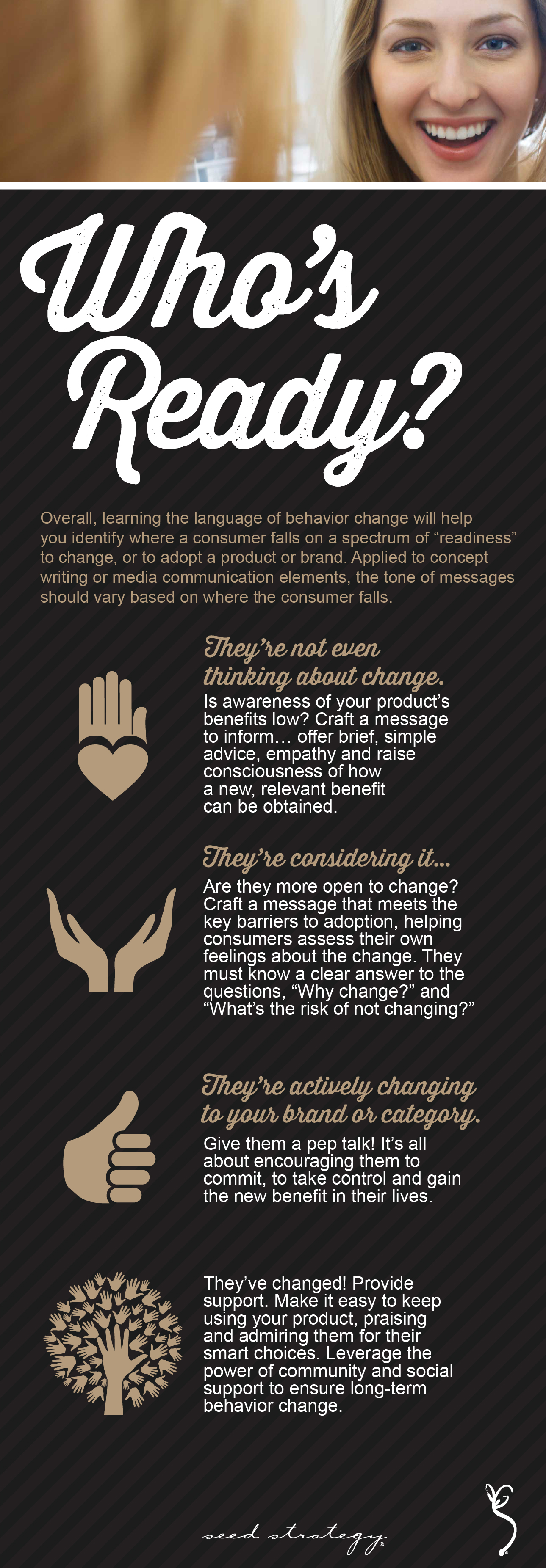
Corey Beilstein is a Senior Vice President and the Director of Research and Development at Seed Strategy. He blends research technologies with his background in behavioral sciences and cognitive psychology to decode consumers and unlock breakthrough insights.

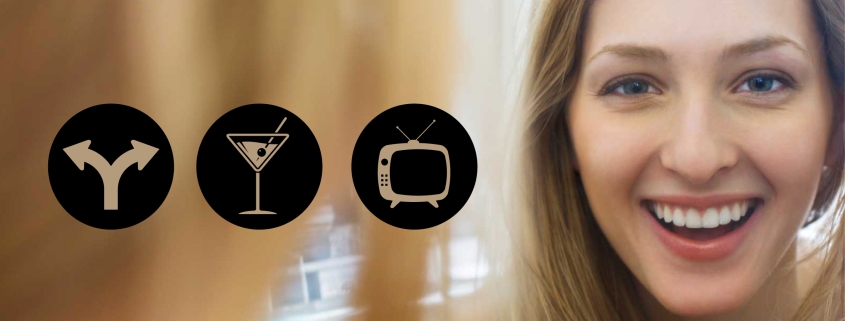

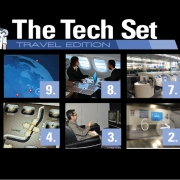


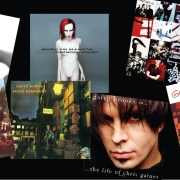


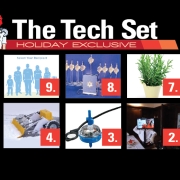

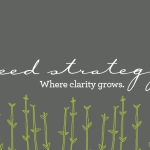

Trackbacks & Pingbacks
[…] 3. Be a Consumer to Change a Consumer […]
Comments are closed.